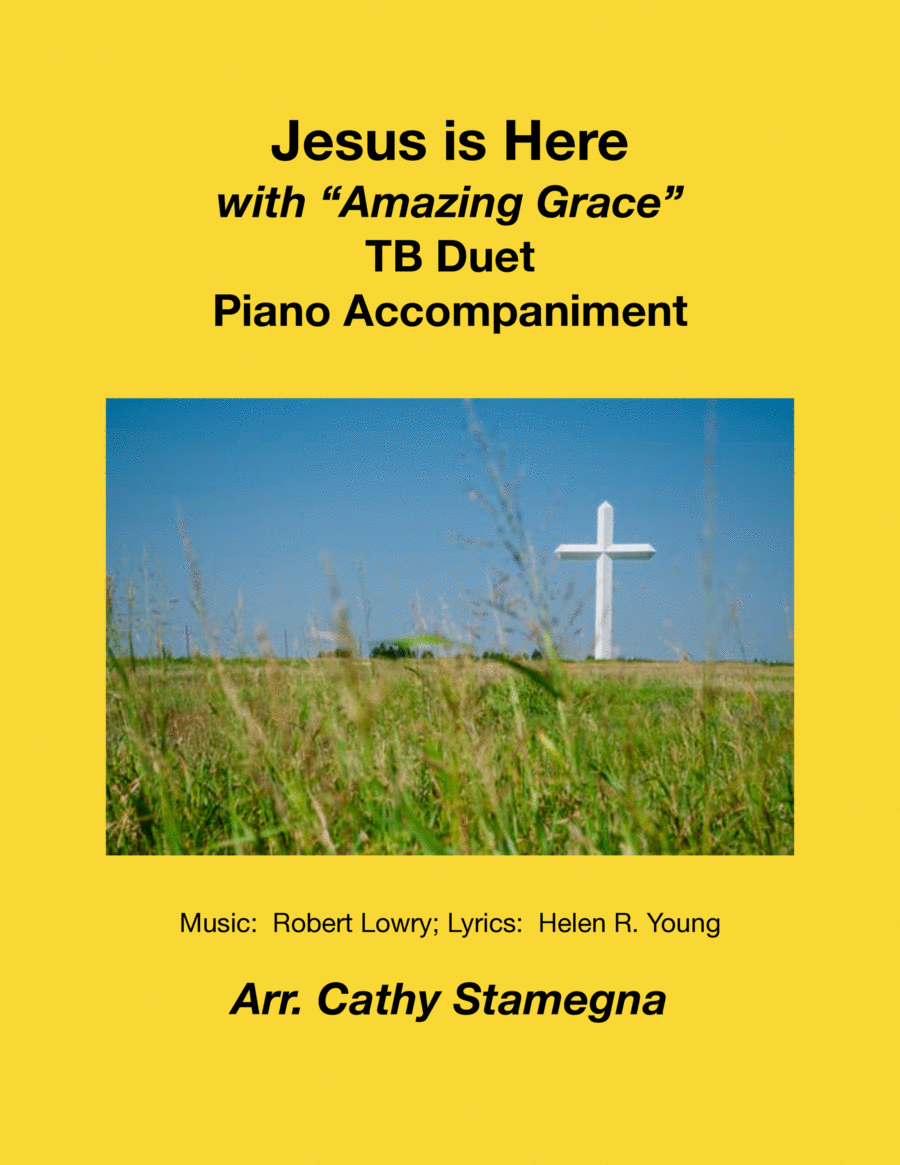Piano,Voice Duet Piano,Voice - Level 3 - Digital Download SKU: A0.893539 Composed by Lyrics: Helen R. Young, John Newton and Music: Robert Lowry, NEW BRITAIN. Arranged by Cathy Stamegna. Christmas,Contest,Easter,Festival,Praise & Worship,Sacred. 8 pages. Cathy Stamegna #499828. Published by Cathy Stamegna (A0.893539). A gentle, yet powerful Robert Lowry/Helen Young hymn. We stand on holy ground Jesus is here; His glory shines around…The Lord is here to save and bless; O lost one, come…Jesus is here. A phrase of Amazing Grace, sung on a vocal syllable, introduces the piece and reappears within it. Appropriate for Easter, Christmas, Reconciliation, Penance, Funeral, many Christian worship occasions, or as concert repertoire, or a festival piece. Performance Time: Approx. 2:40.
